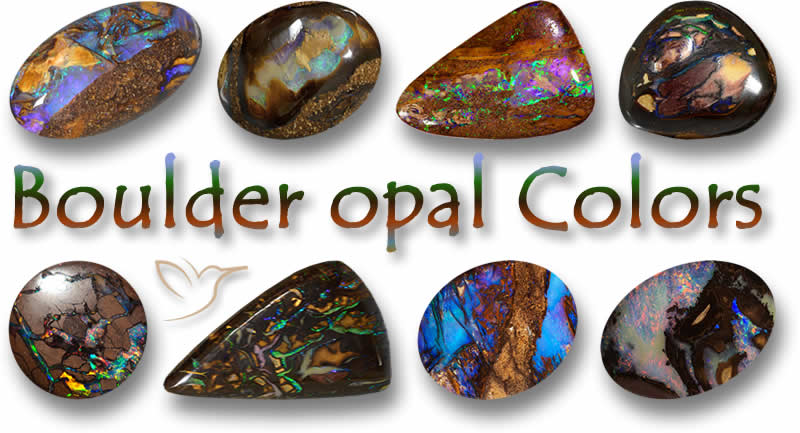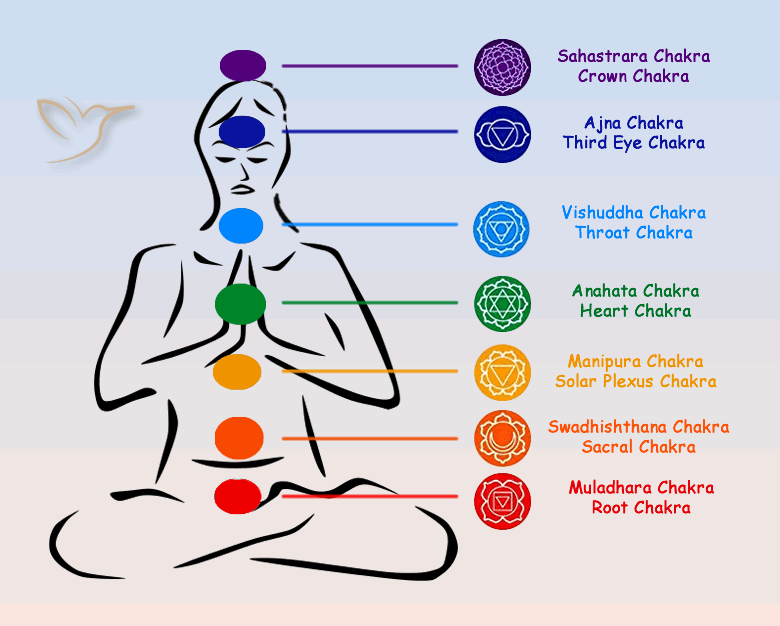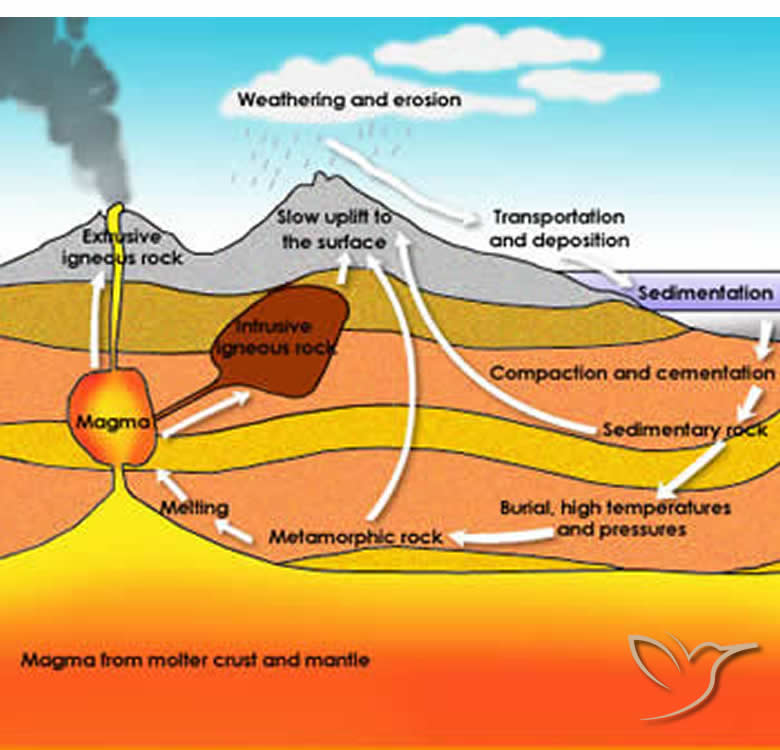Introduction
Opals stand out as a fascinating and diverse group of gemstones, with a rich history filled with legends and superstitions that complement their stunning appearance and captivating color displays.
The opal family features such a wide range of looks, textures, colors, and backgrounds that it's sometimes tough to believe they're all related.
Here, we're focusing on boulder opal, a unique gem native to Queensland, Australia - a state known for its tropical beaches, dense rainforests, red deserts, and some pretty intimidating wildlife.
Boulder opals are cut from solid rock, typically ironstone or sandstone, with the precious opal remaining attached rather than being separated.
Those thin layers of precious opal would be far too fragile on their own or prone to breaking if removed from the host rock.
The dark host rock provides an ideal contrast, highlighting the vibrant play-of-color across the full rainbow spectrum, complete with patterns and brilliant fire.
Boulder Opal Colors

Describing the colors of boulder opals in simple terms is tricky because each one is truly unique. Every shade of the rainbow can show up, in countless combinations, and as you turn the stone, the colors shift and dance in what's known as play-of-color.
Boulder opals stay attached to the hard rock where they formed, adding another layer to their color profile. The opal might appear as a thin coating over a dark base or as veins and patches on the rock's surface. That shimmering opal color pops beautifully against this dark, rocky backdrop.
Opals can resemble abstract paintings, as if an artist experimented with every hue available. But where do these colors originate?
The base color comes from the silicate mineral, often white but sometimes yellow, brown, or red due to impurities. The play-of-color results from the opal's structure.
Over millions of years, opal forms as layers of tiny spheres stack and harden. If these spheres are uniform in size with even gaps, light interacts to create the play-of-color.
These spheres are tiny - about a tenth of a micron across, where a micron is 1/1000th of a millimeter. For comparison, a human hair is around 50 microns thick!
When spheres are similar in size, light flows freely, enhancing the play-of-color. Larger spheres tend to produce more red and orange flashes.
Boulder Opal Patterns
Beyond color, boulder opals also feature distinct patterns. Though each stone is unique, some common styles emerge, like swirls, stripes, or flashes.
Well-known opal patterns include Chinese writing, broad flash, harlequin, floral, peacock, and flagstone - names that often describe what they look like. These are rare across opals but more common in black opals than boulder ones. Boulder opals typically show veins or patches on ironstone, limiting space for broad patterns.
Some recognized patterns include:
- Banded
- Chinese Writing
- Confetti
- Flame
- Floral
- Harlequin
- Mackerel
- Palette
- Pin Fire
- Ribbon
- Roll
- Straw
Boulder Opal Varieties
Boulder opals are opals from Queensland, Australia, where precious opal remains bonded to the rock it formed in - usually ironstone, occasionally sandstone.
While similar stones exist elsewhere, we're sticking to the authentic Australian sources here.
Within this group, two notable varieties are Koroit and Yowah opals, named for their mining regions. They stand out with their specific patterns and colors.
- Yowah - Opals with delightful chocolate tones in the surrounding rock and colorful swirls
- Koroit - Interesting swirls of brightly colored precious opal on a deep brown background
- Boulder Opal Wood Fossils - Formed in the spaces of wood that fossilized into rock over eons, creating a distinctive appearance
Boulder Opal Clarity and Cut

Clarity in gemstones refers to how clearly you can see through the stone and whether it has internal flaws, called inclusions.
Gemstones range from transparent (clear view through), to translucent (light passes but shapes blur), to opaque (no light passes).
Clarity grades span from flawless transparency to full opacity.
Since boulder opals remain attached to solid rock like ironstone, they're opaque - no light gets through that. But the opal layer itself can be transparent on the surface, revealing the stunning play-of-color beneath.
If an opal appears cloudy or milky, dimming the play-of-color, its value drops.
Boulder opals aren't faceted but shaped into cabochons. These can have irregular forms to highlight the best colors and patterns. Surfaces might be uneven or wavy, as polishers uncover hidden color pockets in the rock's crevices.
Spiritual Meaning of Boulder Opal
Disclaimer: The information on spiritual meanings and health benefits is for informational purposes only and is not a substitute for professional medical advice. Always consult a healthcare professional for any health concerns.
Opals have a storied past in ancient Egypt, Greece, and Rome, symbolizing love, hope, purity, prophecy, health, and healing. Greeks believed they were Zeus's tears, Arabs thought they were lightning from the sky, and Babylonians said a jealous storm god shattered a rainbow, creating opals.
In Australia, Aboriginal legends link opals to magic. One tells of the Rainbow Serpent's scales falling as opals while shaping the land. Another involves a pelican discovering fire by pecking an opal, and yet another has opals forming where a rainbow creator touched the earth.
Cultures worldwide - from ancient China and India to the Middle East, Europe, the Americas, and Australia - have seen supernatural powers in opals.
Boulder opals blend precious opal's spiritual traits with the grounding influence of attached ironstone or sandstone. This mix supports both practical matters and higher energies.
It promotes emotional balance and security while aiding in pursuing dreams and ambitions. You can aim high, knowing you'll stay level-headed in tough spots.
Opal sparks passion, tied to desire, lust, seduction, freeing inhibitions, and inspiring love. It can help attract a partner, boost appeal, and strengthen relationships.
Boulder opals with fossilized wood add support for personal growth, new challenges, expanding horizons, and emotional or physical well-being.
Boulder Opal and the Chakras
Disclaimer: The information on spiritual meanings and health benefits is for informational purposes only and is not a substitute for professional medical advice. Always consult a healthcare professional for any health concerns.
The body has seven chakras, energy centers linked to physical, emotional, or mental states, each with a color. This concept from Hindu traditions dates back over 3,000 years.

The chakras are: Crown (purple), Third Eye (indigo), Throat (blue), Heart (green), Solar Plexus (yellow), Sacral (orange), and Root (red).
Blocked chakras can cause issues; unblocking methods include using gemstones. A stone's dominant color influences the related chakra.
Opals span all colors, so they can affect any chakra - a red-dominant opal for the Root, blue for the Throat.
Boulder opals, with their colors and dark rock base, plus their energy, connect most to Crown and Root chakras, though main colors still play a role.
Health Benefits of Boulder Opal
Disclaimer: The information on spiritual meanings and health benefits is for informational purposes only and is not a substitute for professional medical advice. Always consult a healthcare professional for any health concerns.
Traditionally, opal links to eye health - an opal elixir eye wash can soothe sore eyes. It may help regulate insulin, detoxify and regenerate the liver, aid childbirth, PMS, menopause, and stimulate bladder, kidneys, and lymph nodes.
It could ease muscle tension and aches in the lower back and abdomen, boost memory, and stimulate nerves, potentially helping conditions like Parkinson's.
For anxiety, phobias, or panic, carrying opal might calm you. It's also a meditation aid, soothing the mind beforehand.
Customers often ask how to use gemstones for issues. While we're not experts and suggest seeing a doctor for serious matters, here's some insight.
Wearing as jewelry keeps it close to affected areas or chakras.
Carry one in your pocket as a touchstone for stress.
Hold during meditation, place on your body while relaxing, or in your bath for peace.
Boulder Opal Price

Boulder Opals Price List |
||
| Color | Size range | Price range / USD |
|---|---|---|
|
Multicolor |
All Sizes |
$2 - 15/ct |
|
Strong Multicolor |
All Sizes |
$50 - 800/ct |
Valuing opals isn't straightforward. Their uniqueness means personal taste heavily influences price - ask ten appraisers, and you might get ten opinions. That's how merchants often price boulder opals.
Let's break down key factors in opal valuation.
Color tops the list. Boulder opals shine with play-of-color against dark backs. Stones vibrant from all angles hold high value; those dull from some views lose it.
The opal coverage varies - full face coverage boosts value, but a vivid patch can outshine a dull full cover.
Patterns like broad flashes, straw, snake skin, or swirls can raise prices.
Dark body tones enhance color contrast, increasing value, though lighter ones like in Koroit opals still fetch good prices.
Shape matters - cutters craft odd forms to capture color. Once undervalued vs. ovals, now prized for unique jewelry.
Boulder opals may have textured surfaces to reveal hidden colors. This adds intensity, unlike smooth cabochons.
Australian boulder opals are most valuable when comparing similar stones.
Larger sizes command higher prices if quality matches, but don't trade color for size.
Watch price per carat - much weight is ironstone. Check dimensions and decide if it fits your budget.
Boulder Opal Discovery and History

Opals have been mined for millennia, but boulder opals emerged in 1869 near Blackall, Queensland, though some say 1849 in Tarravilla.
Named for the ironstone boulders they form in.
Despite 150+ years, harsh terrain, wars, drought, and other opal finds delayed fame until the 1970s.
Since then, they've gained global love, valued less than black opals but cherished nonetheless.
Where is Boulder Opal found?

About 100 million years ago, a vast inland sea covered central Australia, supplying water for opals along its ancient shores. The Winton formation, roughly California-sized, spans central Queensland and is the main boulder opal source.
This remote area has under 10,000 people, with deserts, extreme heat, and scarce water making mining hard.
Key sites range from Yowah in the south to Winton in the north, with Quilpie central. Others include:
- Koroit
- Toompine
- Kyabra-Eromanga
- Bulgroo
- Yaraka
- Jundah
Those names might inspire an outback trip - pack plenty of essentials if you try it.
How is Boulder Opal Formed?

Debate on opal formation continues, given their diversity. For boulder opals, the leading theory is that millions of years ago, water carried silica into cracks in Queensland's ironstone and sandstone.
The region was wetter; as it dried, water evaporated, leaving gel-like silica that hardened into opal over time.
Can Boulder Opal be Treated?
Boulder opals are generally untreated beyond cutting and polishing.
Their natural rock attachment can mimic opal doublets (thin opal on backing like glass or ironstone).
But boulder opals aren't doublets. (See how to tell real ones below.)
Dark backgrounds enhance opal, leading to treatments like smoking or sugar baths for lighter opals, but not typically for boulder types - their ironstone makes it unnecessary.
Rarely, loose opal might be reattached to ironstone with resin, hard to detect but not common.
What Jewelry Is Boulder Opal Suitable For?
With a Mohs hardness of 5.5-6.5, opals are soft, like glass, so consider use carefully.
But the ironstone backing adds durability, suiting them for most jewelry.
Large, unique pieces with colors, shapes make great for custom, unique designs.
Are Boulder Opals Birthstones?
Yes, boulder opals are October birthstones. Their variety ensures one for any taste - ideal for gifts or self-treating if that's your month.
Opal also marks the 14th wedding anniversary.
How to Care for Boulder Opals
At 5.5-6 hardness, they're soft, but ironstone adds toughness. Still, protect from knocks; remove jewelry for activities like cleaning, sports, or gardening.
Unlike glued composites, natural boulder opals handle water fine.
Store away from harder items to avoid scratches - use cloth bags or boxes.
How to Tell a Real Boulder Opal

Buy from reputable dealers when possible, especially for bargains.
Boulder opals look organic, with ironstone dominating and opal on one side. Get familiar with their appearance.
Synthetics (like Aurora, Kyocera, Gilson) or imitations exist but usually mimic solid opals, not boulder types.
Composites like doublets (opal on backing) or triplets (with dome) can resemble them, but natural ones show no straight join line from the side.
Price signals quality - if too low for a prime stone, it's likely fake.
This isn't exhaustive, but it's a start.
At GemSelect, we offer reports from AIGS or BGL Lab.
Can Boulder Opal Change Color?

Opals' play-of-color is famous, but color change is different.
Some gems like alexandrite shift dramatically under lights - from red indoors to green outside. This happens in alexandrite, garnet, some sapphires - but not opals.
Boulder opals shift with angles and somewhat lights (fluorescents dim play-of-color), but they're not color-change gems.
What Is So Special About Boulder Opal
Opals alone are wonderful, with colors dancing deep inside like magic.
Add natural ironstone framing in black, brown, gold, showcasing blues, greens, oranges, reds - and you hold nature's masterpiece.
Authentic ones come from Australia's harsh red center, where resources are rare as the gems.
Dug up, cut with hope, the result can amaze.
Boulder Opal - Gemological Properties
|
Chemical Formula: |
SiO2_nH2O Hydrous silicon dioxide |
|
Crystal Structure: |
Amorphous |
|
Color: |
All colors - play of color |
|
Hardness: |
5.5 to 6.5 on the Mohs scale |
|
Refractive Index: |
1.37 to 1.52 |
|
Density: |
1.98 to 2.50 |
|
Cleavage: |
None |
|
Transparency: |
Opaque, translucent, transparent |
|
Double Refraction or Birefringence: |
None |
|
Luster: |
Waxy - resinous |
|
Fluorescence: |
None |
Frequently Asked Questions
What is boulder opal?
Boulder opal is a type of opal from Queensland, Australia, where precious opal remains attached to its host rock, usually ironstone, creating a unique, durable gem with vibrant play-of-color against a dark background.
Where is boulder opal found?
Boulder opal is primarily found in central Queensland, Australia, in areas like Yowah, Koroit, Quilpie, and Winton, within the vast Winton formation.
How is boulder opal formed?
It forms when silica-rich water seeps into cracks in ironstone or sandstone, evaporates, and hardens over millions of years into opal layers.
Can boulder opal be treated?
Generally, no - beyond cutting and polishing. It's natural, though rare cases might involve reattaching loose opal with resin.
What jewelry suits boulder opal?
Thanks to its ironstone backing, it's durable for rings, pendants, earrings, and more, especially unique designs.
Are boulder opals birthstones?
Yes, for October, and they mark the 14th wedding anniversary.
How do I care for boulder opal?
Clean with a soft cloth and mild soap; store separately to avoid scratches; remove before activities.
How can I tell if a boulder opal is real?
Look for natural integration with rock - no straight join lines like in doublets. Buy from reputable sources and check prices.
Does boulder opal change color?
It shows play-of-color that shifts with angles and light, but not dramatic color change like alexandrite.
What makes boulder opal special?
Its natural rock setting frames vibrant colors uniquely, sourced from Australia's harsh outback, making each piece one-of-a-kind.

